 Greetings, Earthling. Take me to your leading purveyor of glitter. 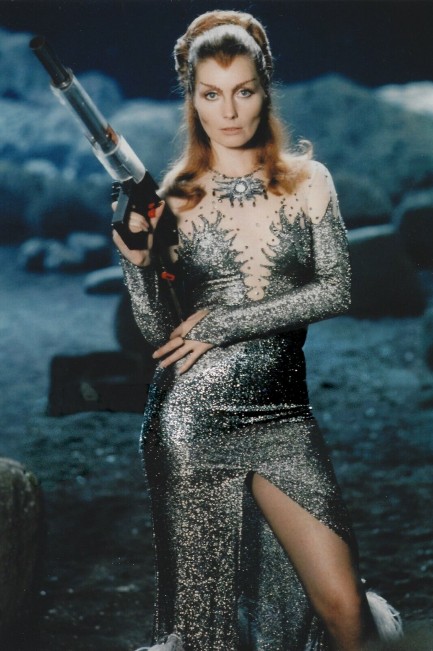
This promo photo features Hungarian actress Catherine Schell, and it was made for the cheeseball British television series Space: 1999, about the trials and troubles of the inhabitants of a moon colony after a massive explosion blows the moon out of Earth's orbit. As the survivors hurtle through space they encounter strange phenomena and new lifeforms. Schell played an alien named Maya from the planet Psychon, and could transform herself into anything organic, including, seemingly, an aficionado of intricate beadwork. She played Maya for twenty-five episodes, and is also well known for appearances in films such as On Her Majesty's Secret Service and Moon Zero Two. This shot is from 1975.
 I'm not just pretty—I have relatively positive feelings toward the institution of marriage. 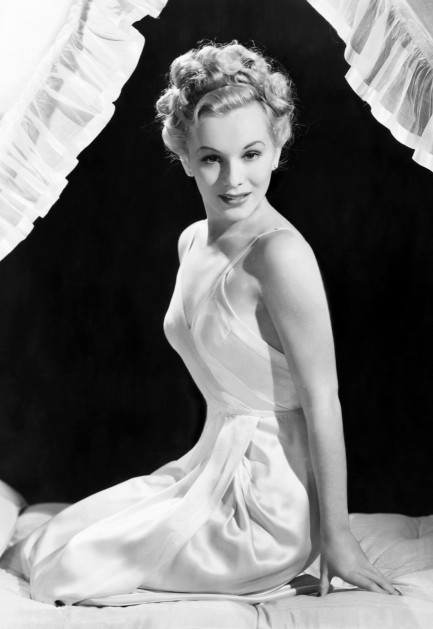
This nice shot shows Hungarian actress, singer, and socialite Eva Gabor. She was not quite as famous as her older sister Zsa Zsa, and she also wasn't nearly as as fickle—by which we mean she only married five times, as opposed to Zsa Zsa's nine trips down the aisle. Marriages ran in the family. The oldest Gabor sister, Magda, had six husbands. But two of them died on her, so technically she finished third in the marital grand prix. You're probably wondering if the sisters shared any husbands. Yes, lucky George Sanders married both Magda and Zsa Zsa. That must have made for some fun Christmas dinners. Eva appeared in numerous films, including Pacific Blackout, Love Island, Captain Kidd and the Slave Girl, Paris Model, and The Last Time I Saw Paris. On television her most popular role was as Lisa Douglas on Green Acres. The Gabor genes didn't just provide talent and beauty—they bestowed longevity. Eva's mother died at 100, and both her sisters reached 99. You have to figure Eva would have gotten there too, but a bathtub fall followed by pneumonia did her in two decades early, aged seventy-six. The above photo shows her in 1941, when she was a tender twenty-two.
 Pack light and leave your inhibitions behind. 
This poster was made in Liege, Belgium for the romantic drama Extase, starring Austro-Hungarian beauty Hedy Lamarr. Based on a novel by the Vienna born author and actor Robert Horký, the film opened in Belgium today in 1933, after having premiered in then-Czechoslovakia as Ekstase in January of that year. It isn't a pulp style film, but it's significant, which is why we had a look. It's about a young upper class woman in an unfulfilling marriage who solves that problem by acquiring a sidepiece in the form of a worker played by Aribert Mog. This results in some steamy moments and—some viewers say—the first orgasm ever depicted onscreen. “Some viewers” are right. There's no doubt. In the midst of a nocturnal tryst Mog's head and torso slide off-frame, as Lamarr breathes more and more heavily before finally grimacing in lovely fashion and snapping her string of pearls.
Yeah, this is hot stuff for 1933. And we thought everyone was having a great depression. Shows what we know. If the title Extase doesn't tell you what's going on, consider the fact that Hedy's character is named Eva, and Mog's is named Adam. It's that kind of movie. In a way, an orgasm was inevitable. Lamarr also captures moviegoers' attention with a nude swim and sprint through the fields that occurs about twenty-eight minutes in. Why's she running around starkers? Her mare Loni decides to get herself some equine action and abandons Hedy—taking her clothes along for the ride. Always make sure to tie your mount to something, especially when it's horny. Lamarr really is naked in the scene, too, which few modern performers would do in this age of new puritanism. It's thanks to this run through the wild that she meets Mog, the eventual master of her clitoris, if not her heart.
Extase isn't a silent film, but it's close. There's a lot of orchestral music and only a dozen or so sections of dialogue. Even so, it's very watchable. The visuals tend to be laden with meaning in films such as these, but some scenes require no interpretation at all, like the bit where a couple of horses mate (not Loni and her love, sadly). They don't show it of course, but the crash zoom of a mare's backside from the point-of-view of the stud horse gets the idea across with remarkable subtlety—not. It was hilarious, actually. But hey—even horses feel extase, because it's just a natural thing, see. On its own merits we'd call Extase more of a curio than a cinematic triumph, but it certainly achieves what it sets out to do, and that's success of a form, even if it would be forgotten without the orgasm. But that's often true, isn't it? 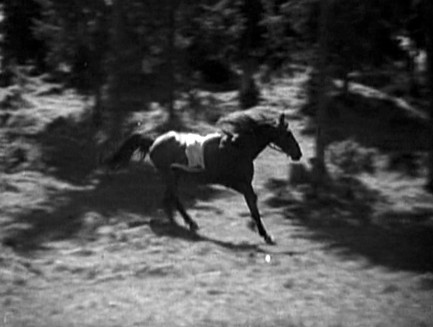 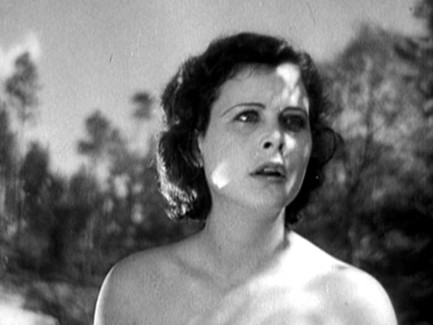 Loni! Come back, you stupid horse! That jumpsuit doesn't even fit you! Loni! Come back, you stupid horse! That jumpsuit doesn't even fit you!
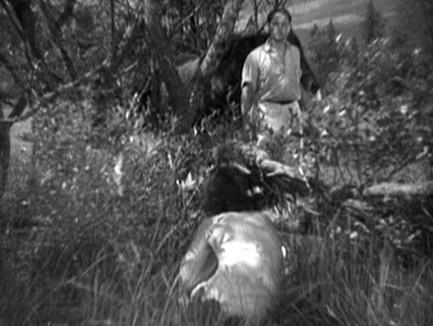 Why hello, lovely naked creature. Why hello, lovely naked creature.
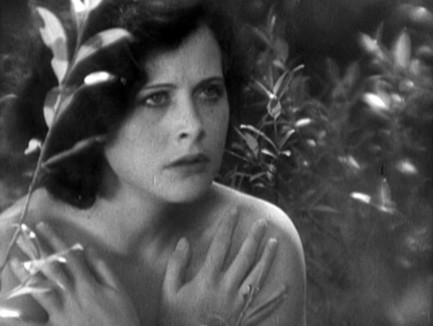 You rude beast! Try taking a picture. It'll last longer. You rude beast! Try taking a picture. It'll last longer.
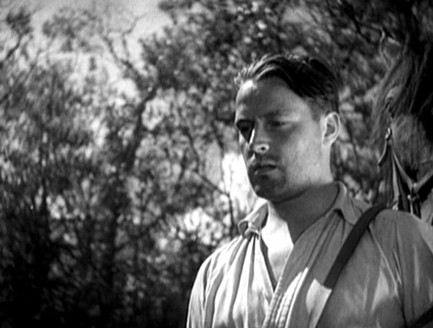 Already done. With my mind. Deposited you right in the spank bank. Already done. With my mind. Deposited you right in the spank bank.
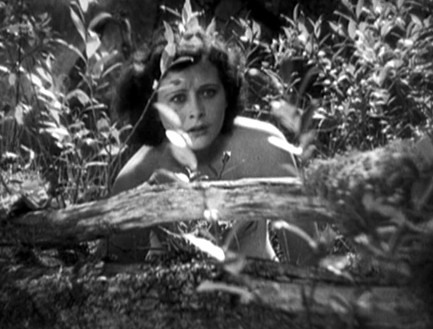 Bank— What? Spank what? Oh, never mind. Give me my clothes. Bank— What? Spank what? Oh, never mind. Give me my clothes.
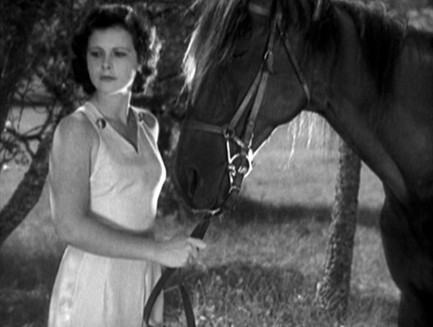 Objectify me, will you? Two can play that game. Duh... nice package! Duh... I'm an idiot! Objectify me, will you? Two can play that game. Duh... nice package! Duh... I'm an idiot!
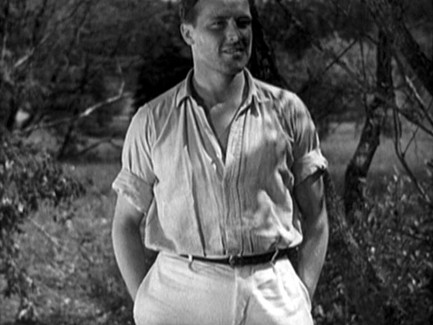 Thanks. And you're not an idiot—many women agree with you about my package. Thanks. And you're not an idiot—many women agree with you about my package.
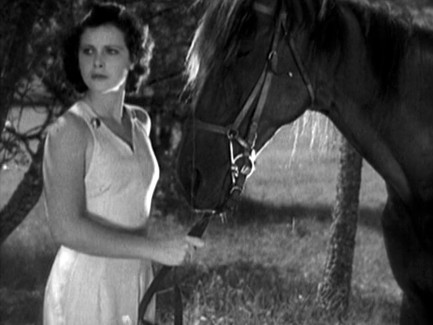 No, I'm objectifying you, like you did to me. No, I'm objectifying you, like you did to me.
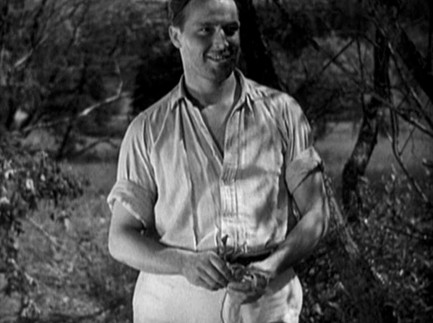 Like a sex object. I understand. That's cool. I love sex. Like a sex object. I understand. That's cool. I love sex.
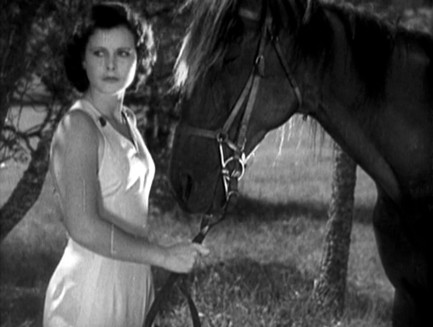 No, I mean I'm debasing you via the reduction of any unique and admirable qualities you might have down to the purely phy— Oh, forget it! You're too dumb to understand. No, I mean I'm debasing you via the reduction of any unique and admirable qualities you might have down to the purely phy— Oh, forget it! You're too dumb to understand.
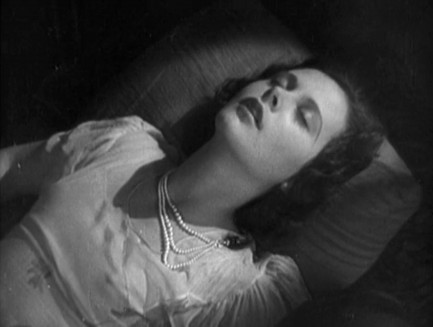 Oh... oh... oh! It's true he lacks... formal education... Oh... oh... oh! It's true he lacks... formal education...
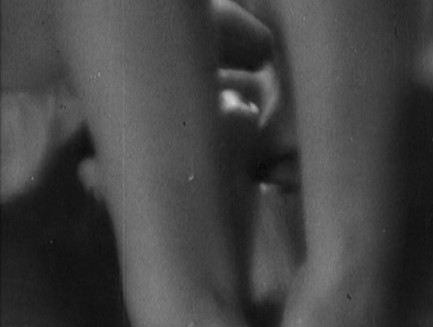 But he sure knows how... to make a girl... SNAP HER PEARLS! But he sure knows how... to make a girl... SNAP HER PEARLS!
 *sigh* *sigh*
 When I'm a really big star there'll be a photo retoucher to make sure I have perfect armpits. 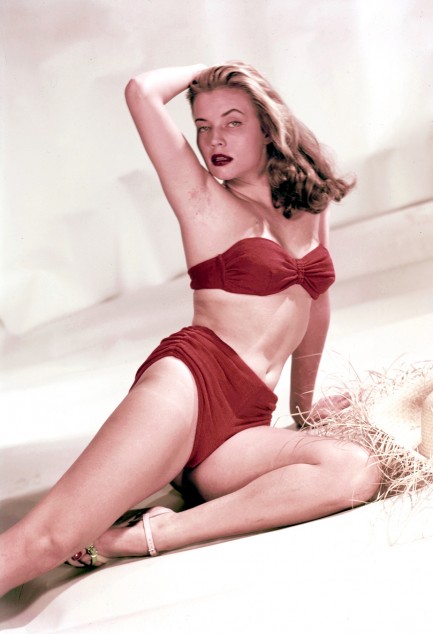
This scan made from a 35-millimeter slide shows Hungary born actress Ava Norring, who had exactly one credited role—that of Beatrice in 1952's The Snows of Kilimajaro, in which she appeared with her more famous namesake Ava Gardner. She later was featured in an eight page Esquire photo essay published in July 1955, but stardom was not to be. We love this shot, underarm razor burn and all. We haven't seen The Snows of Kilimajaro, but we're curious about it. The 1936 Ernest Hemingway work upon which it's loosely based is a short story (touching on standard Hemingway themes we discussed a while back), and it's always interesting to see how filmmakers flesh out something so slight. We'll get to the movie at some point, see both Avas in action, and probably report back.
 Why so serious, darlings? I'm on my third divorce, and if I can laugh so can you. 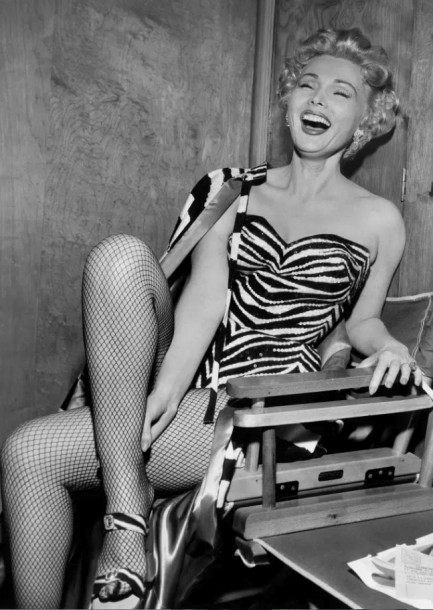
The above photo from the mid-1950s shows Hungarian star Zsa Zsa Gabor, whose films included Moulin Rouge, Death of a Scoundrel, Drop Dead Darling, Touch of Evil, and of course, Queen of Outer Space, which we talked about here. What was really funny about Gabor is that she would eventually total seven divorces. It could be a Hollywood record.
*checking internet*
Nope. Lana Turner beat her with eight, and Elizabeth Taylor and Mickey Rooney both tied her with seven. Gabor, however, also had an anullment. So she ditched eight hubbies. Well, merrily, merrily, merrily, merrily, life is but a dream, and considering she reached age ninety-nine, maybe she knew more about living than all of us. You see her below from the same shoot, contemplating another marriage proposal.
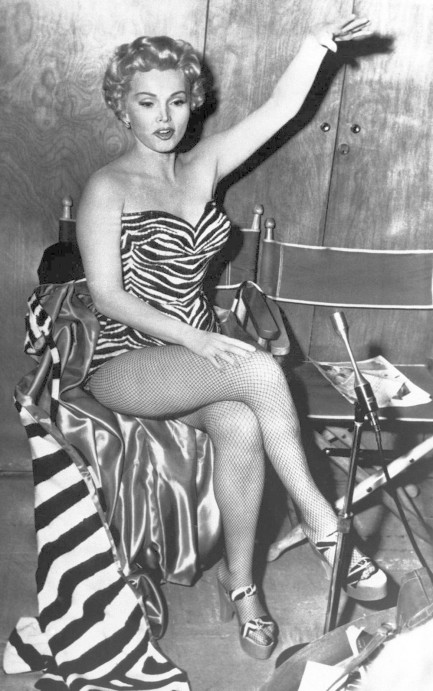
 The artist is almost as mysterious as his posters. 
You can see immediately that this Universal Pictures teaser poster for 1933's The Invisible Man is special. You'll find out how special in a minute. It was painted by Hungarian born artist Karoly Grosz, whose work is highly sought after. With this dark portrait he captured the essence of the film's insane central character Dr. Jack Griffin, who accidentally discovers invisibility and decides, what the hell, he'll use it to take over the world. An original of this poster went up for auction a few years back and pulled in $275,000. That's about as special as vintage art gets.
Halloween is today, so we thought we'd share more horror posters. Since Grosz specialized in that genre, we were able to focus solely on him and his work for Universal. Though he's a collectible legend, his bio is a bit sketchy. He immigrated to the U.S. in 1901 as a child, was naturalized as a citizen, and grew up to live and work in New York City. His output came mainly between 1920 and 1938, and he died young sometime after that (nobody is sure when, but most sources say he was in his early forties). At least he left behind these beautiful gifts to cinematic art. You can see another piece from him in this post from a while back, the one with the green-eyed cat.
 Don't mess with the man upstairs. 
Stranger on the Third Floor is sometimes cited as a proto film noir, coming a year before the first official noir, 1941's The Maltese Falcon. In this day and age, any vintage crime film is called a film noir on crowdsourced websites like IMDB, so depending on where you look film noir isn't as pure a cycle as it used to be. But in this case the debate is fair. The film is about newspaper journalist John McGuire, who serves as a witness at a sensational murder trial, while his fiancée Margaret Tallichet frets about the impact of recognition on their lives. The two of them are planning to move out of their boarding houses and find a place together, but McGuire's building has lately been haunted by a mysterious stranger played by Hungarian actor Peter Lorre. Who is he? Why is he hanging around? Is he somehow connected to the murder?
Gene D. Phillips, in his book Out of the Shadows: Expanding the Canon of Film Noir, cites Stranger on the Third Floor as a film that “codified the visual conventions of film noir.” It has flashbacks, a brilliant nightmare sequence, a sense of growing dread, a false accusation (or possibly two), a narration (though not of the hard-boiled variety), and a usage of angles and shadows that is extravagant. Where it differs from film noir is in its general lack of cynicism and world weariness. In fact, it's the opposite. McGuire ponders whether doing his civic duty by testifying will have consequences, but at no point does he feel like a sucker for doing so. He believes in society and its basic functions. The Maltese Falcon, by contrast, offers civic duty as an option, but Sam Spade acts as he does because of his personal code. Duty is secondary, and ultimately, so is love.
Despite these differences between Stranger on the Third Floor and canonical film noir, casting the net wide enough to include this movie makes sense. It definitely gets its influences from the same places as film noir, particularly in German Expressionist cinema of the early 1900s. Interestingly, Lorre would feature prominently in The Maltese Falcon, as would Elisha Cook, Jr., who plays the defendant at the trial. So the connection between Stranger on the Third Floor and film noir is concrete on that level at least. All that said, does our opinion matter? Watch Stranger on the Third Floor and debate whether it's a film noir yourself. You'll see a visual masterwork regardless of which cinematic bin you stick it in. It premiered in the U.S. today in 1940.
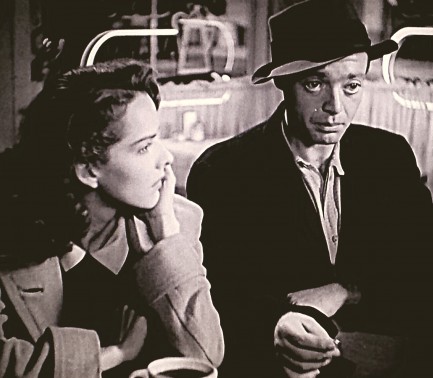 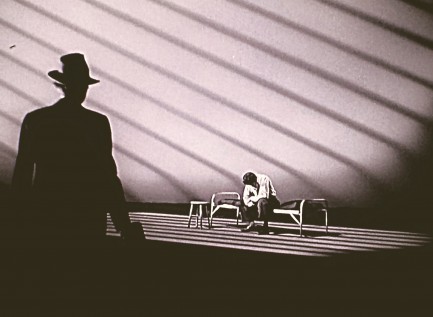 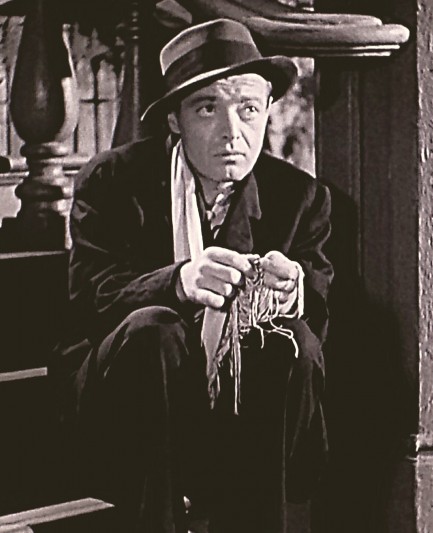   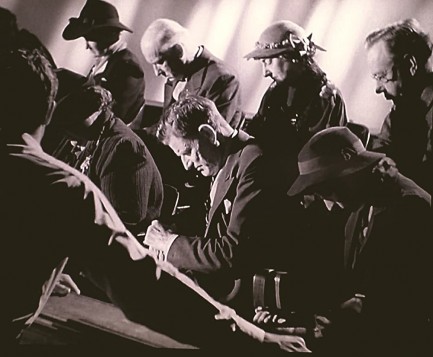 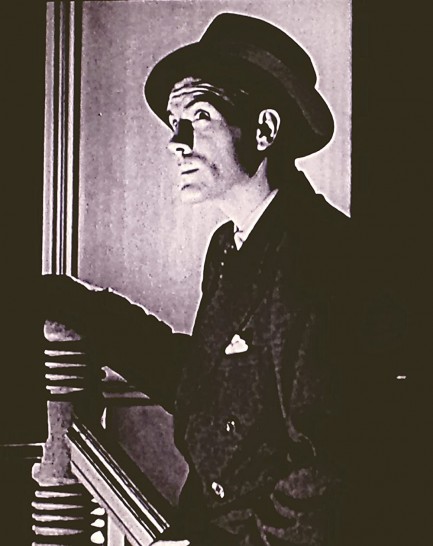 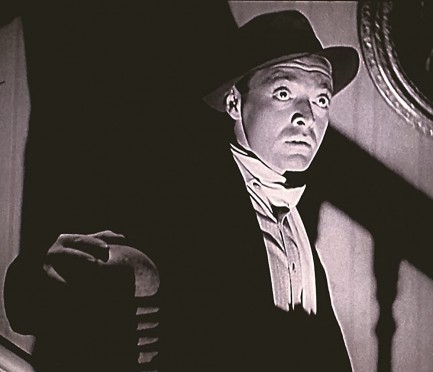 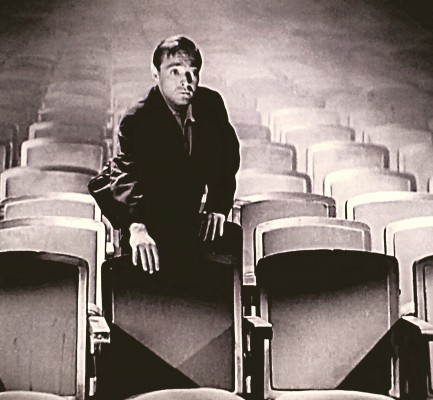 
 Sun, sand, and an unusually high homicide rate. 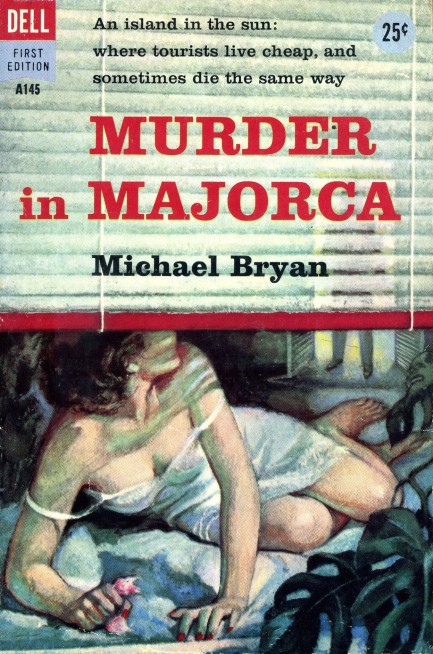 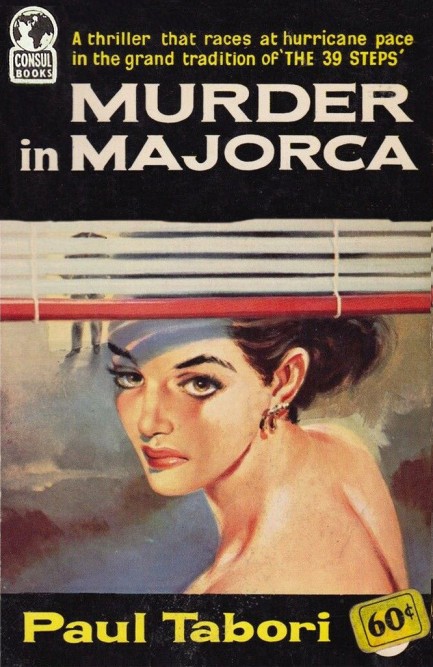
Of all the covers we've posted on Pulp Intl., these two—the first from U.S. publisher Dell, and the second from British publisher Consul—are among the most interesting. Both illustrate books called Murder in Majorca, both feature a female figure partly obscured by foreground blinds, and both have in the background the lower legs of a man walking into the room. But Michael Bryan and Paul Tabori are different authors, and these are different tales. Is that not weird as hell? We've always wanted to read these books because Majorca, aka Mallorca, is one of the great garden spots on Earth. We've been several times and it always recalibrates us perfectly. Also, there isn't much murder there, despite the titles of these books, which is a nice add-on to the sun, sand, food, bars, architecture and beautiful people.
Michael Bryan was in reality Brian Moore, and also wrote as Bernard Mara. His Murder in Majorca appeared in 1957. Paul Tabori was in reality Hungarian author Pál Tábori, and his Murder in Majorca came in 1961. How did these two uncredited covers get to be virtually identical? No idea. Sometimes when a book was reprinted overseas a second artist was commissioned to do a riff on the original cover, such as here. So maybe the second piece was for a re-issue, but it fell through, and the art was lying around when Tabori wrote his book. That's a wild-ass guess that has very little chance of being correct, but we just know these two fronts can't be similar by coincidence, so that's all we've got by way of explanation. Maybe you have a better deduction, or even the facts. If so, we'd love to know.
 She was more than just a movie star.
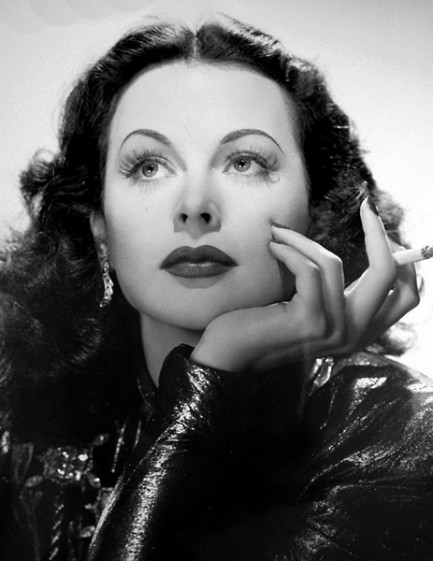 Smithsonian.com published an in-depth story yesterday about Austria-Hungary born Hollywood icon Hedy Lamarr, and how her technical genius helped bring the world Wi-Fi, Bluetooth, GPS, and cell phones. Hah! Get with it Smithsonian. We talked about this under-discussed aspect of her life years ago. Smithsonian.com published an in-depth story yesterday about Austria-Hungary born Hollywood icon Hedy Lamarr, and how her technical genius helped bring the world Wi-Fi, Bluetooth, GPS, and cell phones. Hah! Get with it Smithsonian. We talked about this under-discussed aspect of her life years ago. It's curious that no matter how many times people write about Lamarr's technological exploits it never seems to become a generally known aspect of her personality. Maybe people want to see her as a beautiful actress, and much of the interest stops there. The Smithsonian piece will probably help change that a bit, and it's well written also (though considering what digital technology has wrought we'd probably add the phrase "for better and worse").
Yesterday's piece comes in tandem with the Smithsonian's Washington D.C. based National Portrait Gallery acquiring a rare original Luigi Martinati poster painted to promote Lamarr's 1944 thriller The Conspirators. We have no idea what it cost, but certainly a pile of money, since Martinati was not just a great artist, but one who tended to focus more on portraiture in his promos. You can see what we mean just below, and by clicking here and scrolling. As for Lamarr, we'll doubtless get back to her—and all her interesting facets—later.
 A textbook case of pianist envy leads to serious trouble. 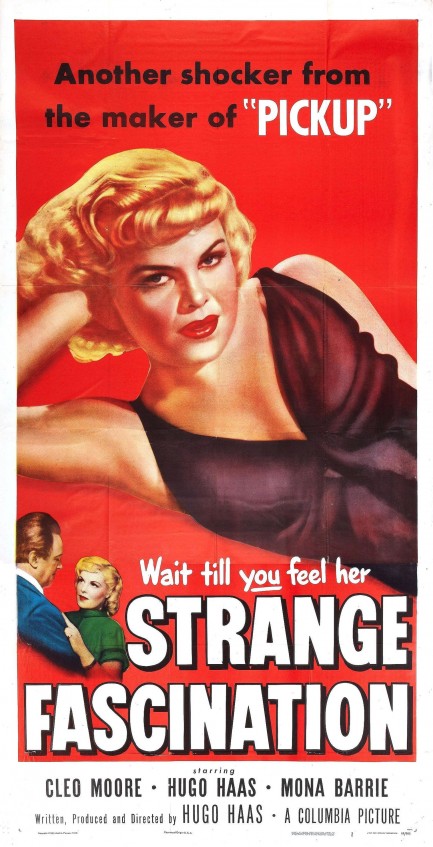
This poster was made for Strange Fascination, a film put together by triple threat Hugo Haas, who wrote the screenplay, directed, and starred. It premiered this month in 1952. Plotwise a rich widow traveling in Europe meets a brilliant pianist who wants to leave the continent to get away from its “recent misfortunes.” She sponsors him and brings him to New York City, where he has immediate success, but his head is soon turned by platinum blonde showgirl Cleo Moore. She's got show business ambitions but no avenues, so she hitches herself to the rising pianist and proceeds to make his career go limp.
Hugo Haas headlined scores of movies and accumulated more than forty credits directing and writing, so Strange Fascination was no vanity project. In fact we suspect it was uniquely important to him because of its autobiographical elements. For instance, like the pianist he plays Haas left eastern Europe—Brno, Austria-Hungary, which is now part of the Czech Republic—and became respected in his chosen industry. And his given name was Pavel Haas, while his lead character here is named Paul, the Anglicization of Pavel.
In Strange Fascination Haas crafted a solid movie but don't let the online reviews fool you—it isn't film noir. These days any movie that's mid-century, black and white, and dramatic gets the noir stamp on crowd sourced websites like IMDB and Wikipedia. Strange Fascination contains bits of noir iconography, but films of the period have no choice about that—after all, rain falls even in musicals and neon signs occur even in comedies. Strange Fascination is really a straight melodrama. Go into this little b-movie with that expectation and it may prove satisfying.
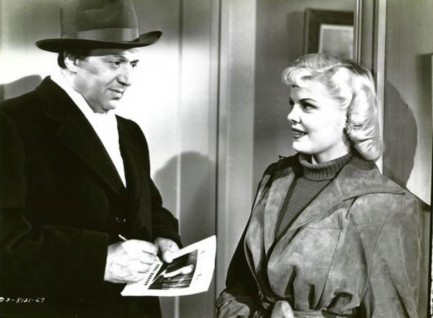 So when I sign this I'm giving you permission to turn my life into an unrelenting hell? So when I sign this I'm giving you permission to turn my life into an unrelenting hell?

|
 |

The headlines that mattered yesteryear.
1945—Mussolini Is Arrested
Italian dictator Benito Mussolini, his mistress Clara Petacci, and fifteen supporters are arrested by Italian partisans in Dongo, Italy while attempting to escape the region in the wake of the collapse of Mussolini's fascist government. The next day, Mussolini and his mistress are both executed, along with most of the members of their group. Their bodies are then trucked to Milan where they are hung upside down on meathooks from the roof of a gas station, then spat upon and stoned until they are unrecognizable. 1933—The Gestapo Is Formed
The Geheime Staatspolizei, aka Gestapo, the official secret police force of Nazi Germany, is established. It begins under the administration of SS leader Heinrich Himmler in his position as Chief of German Police, but by 1939 is administered by the Reichssicherheitshauptamt, or Reich Main Security Office, and is a feared entity in every corner of Germany and beyond. 1937—Guernica Is Bombed
In Spain during the Spanish Civil War, the Basque town of Guernica is bombed by the German Luftwaffe, resulting in widespread destruction and casualties. The Basque government reports 1,654 people killed, while later research suggests far fewer deaths, but regardless, Guernica is viewed as an example of terror bombing and other countries learn that Nazi Germany is committed to that tactic. The bombing also becomes inspiration for Pablo Picasso, resulting in a protest painting that is not only his most famous work, but one the most important pieces of art ever produced. 1939—Batman Debuts
In Detective Comics #27, DC Comics publishes its second major superhero, Batman, who becomes one of the most popular comic book characters of all time, and then a popular camp television series starring Adam West, and lastly a multi-million dollar movie franchise starring Michael Keaton, then George Clooney, and finally Christian Bale. 1953—Crick and Watson Publish DNA Results
British scientists James D Watson and Francis Crick publish an article detailing their discovery of the existence and structure of deoxyribonucleic acid, or DNA, in Nature magazine. Their findings answer one of the oldest and most fundamental questions of biology, that of how living things reproduce themselves.
|

|
|

It's easy. We have an uploader that makes it a snap. Use it to submit your art, text, header, and subhead. Your post can be funny, serious, or anything in between, as long as it's vintage pulp. You'll get a byline and experience the fleeting pride of free authorship. We'll edit your post for typos, but the rest is up to you. Click here to give us your best shot.

|
|







 Loni! Come back, you stupid horse! That jumpsuit doesn't even fit you!
Loni! Come back, you stupid horse! That jumpsuit doesn't even fit you! Why hello, lovely naked creature.
Why hello, lovely naked creature. You rude beast! Try taking a picture. It'll last longer.
You rude beast! Try taking a picture. It'll last longer. Already done. With my mind. Deposited you right in the spank bank.
Already done. With my mind. Deposited you right in the spank bank. Bank— What? Spank what? Oh, never mind. Give me my clothes.
Bank— What? Spank what? Oh, never mind. Give me my clothes. Objectify me, will you? Two can play that game. Duh... nice package! Duh... I'm an idiot!
Objectify me, will you? Two can play that game. Duh... nice package! Duh... I'm an idiot! Thanks. And you're not an idiot—many women agree with you about my package.
Thanks. And you're not an idiot—many women agree with you about my package. No, I'm objectifying you, like you did to me.
No, I'm objectifying you, like you did to me. Like a sex object. I understand. That's cool. I love sex.
Like a sex object. I understand. That's cool. I love sex. No, I mean I'm debasing you via the reduction of any unique and admirable qualities you might have down to the purely phy— Oh, forget it! You're too dumb to understand.
No, I mean I'm debasing you via the reduction of any unique and admirable qualities you might have down to the purely phy— Oh, forget it! You're too dumb to understand. Oh... oh... oh! It's true he lacks... formal education...
Oh... oh... oh! It's true he lacks... formal education... But he sure knows how... to make a girl... SNAP HER PEARLS!
But he sure knows how... to make a girl... SNAP HER PEARLS! *sigh*
*sigh*






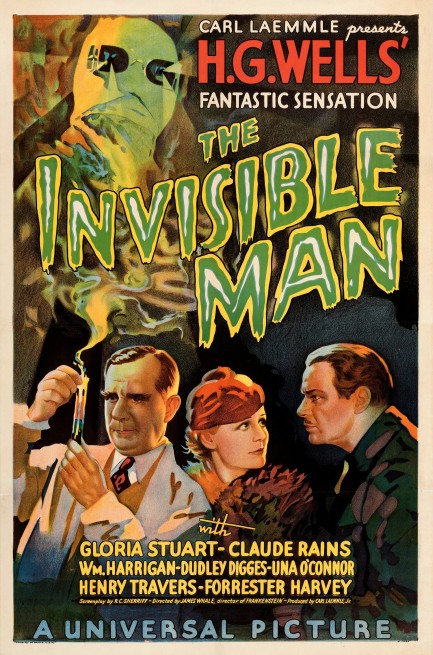
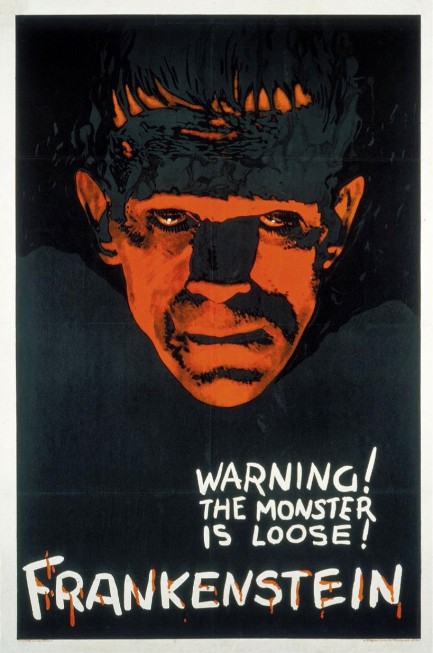
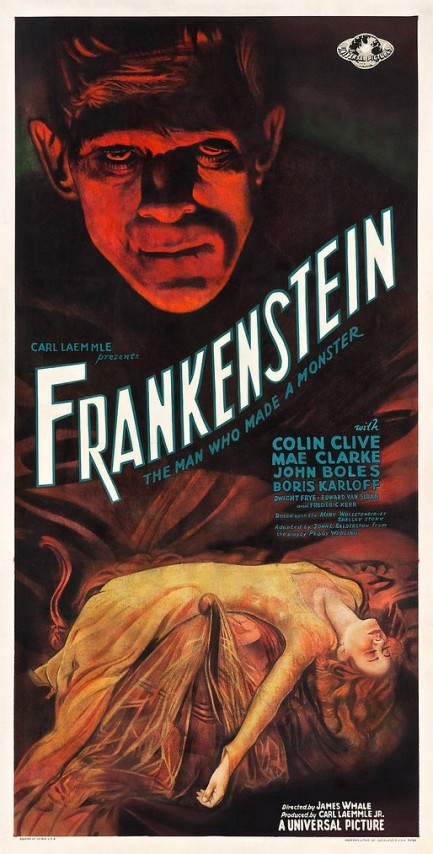
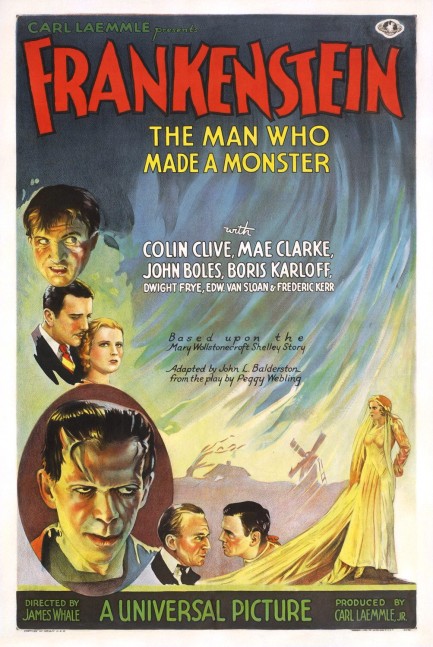
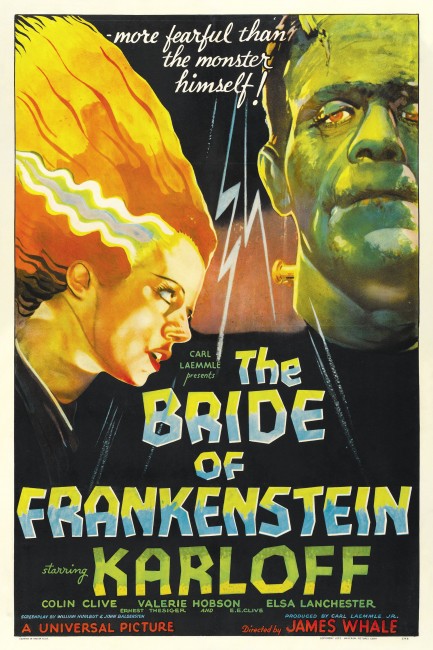

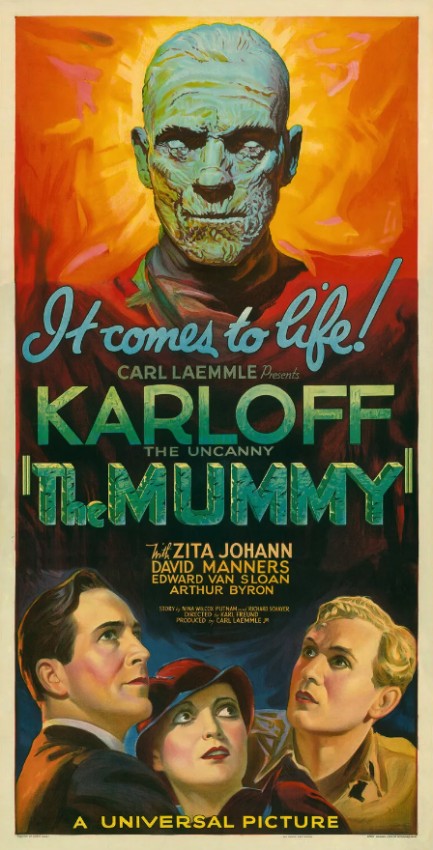
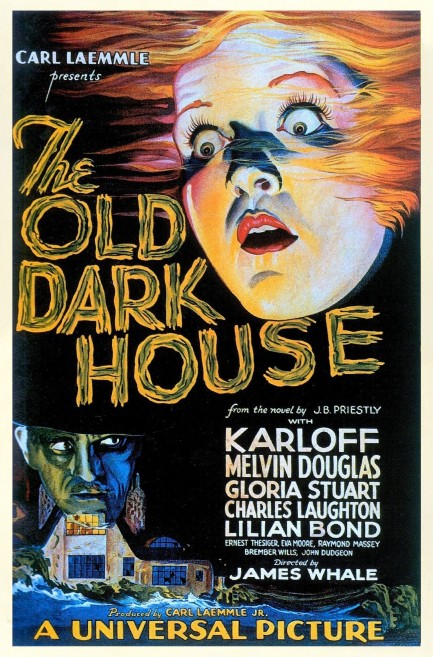

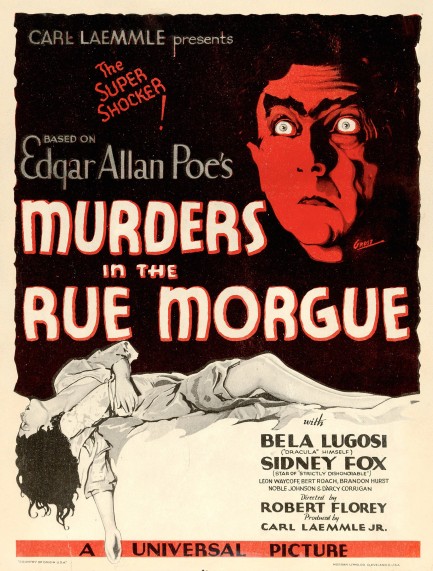
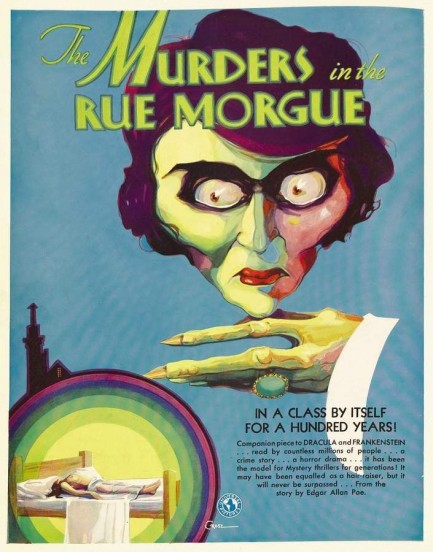
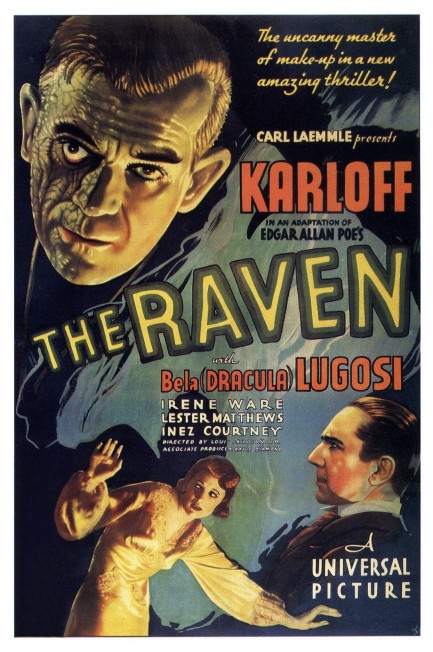
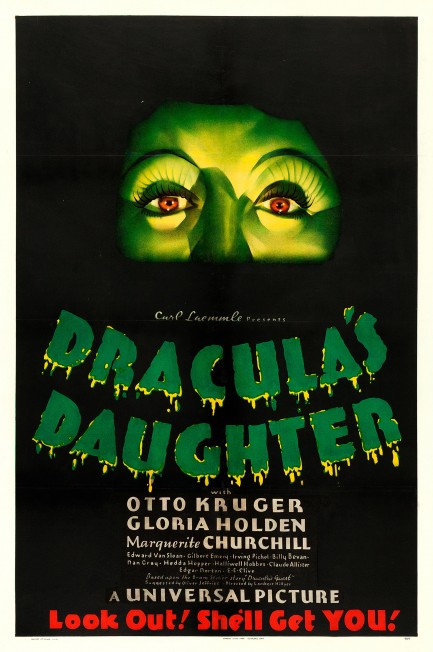
















 Smithsonian.com published an in-depth story yesterday about Austria-Hungary born Hollywood icon Hedy Lamarr, and how her technical genius helped bring the world Wi-Fi, Bluetooth, GPS, and cell phones. Hah! Get with it Smithsonian. We talked about this under-discussed aspect of her life years ago.
Smithsonian.com published an in-depth story yesterday about Austria-Hungary born Hollywood icon Hedy Lamarr, and how her technical genius helped bring the world Wi-Fi, Bluetooth, GPS, and cell phones. Hah! Get with it Smithsonian. We talked about this under-discussed aspect of her life years ago.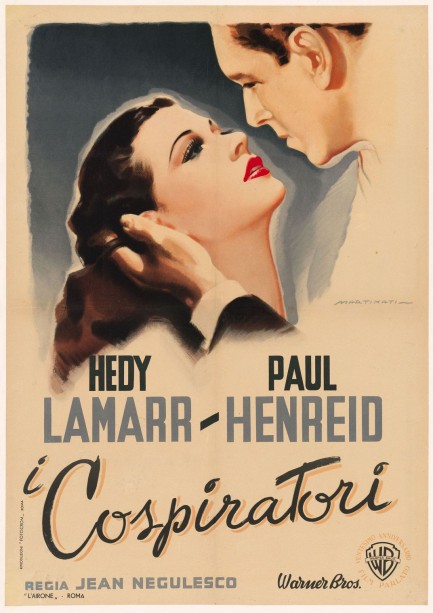


 So when I sign this I'm giving you permission to turn my life into an unrelenting hell?
So when I sign this I'm giving you permission to turn my life into an unrelenting hell?




































































